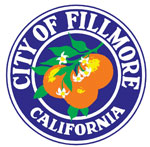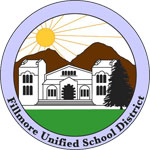|
By Anonymous — Monday, November 3rd, 2014
SACRAMENTO, CA – With the influenza season now upon us, Dr. Ron Chapman, director of the California Department of Public Health (CDPH) and state health officer, today urges Californians to get a flu shot. While flu activity in California remains low with no laboratory confirmed outbreaks or deaths, now is the time to get immunized. Influenza can cause severe disease across all age groups. According to the California influenza surveillance report recently published, there were 404 influenza-associated deaths reported in persons under 65 years of age in California during the 2013-14 influenza season. This was the highest number of deaths reported to CDPH since the 2009 H1N1 pandemic. According to the Centers for Disease Control and Prevention (CDC), influenza and related complications are the eighth leading cause of death in the United States, associated with thousands of hospitalizations and deaths each year in the U.S. All 2014-2015 flu vaccines protects against an influenza A (H1N1) virus, an influenza A (H3N2) virus and an influenza B virus, and some also protect against a second influenza B virus. This year’s flu vaccine contains the same strains that were part of the 2013-14 flu vaccine. To stop the spread of flu and other respiratory illnesses, Californians should also: • Stay home when sick. • Cover a cough or sneeze by using your elbow or a tissue and properly disposing of the used tissue. • Wash hands thoroughly with soap and warm water or an alcohol-based hand sanitizer, avoiding contact with your eyes, nose and mouth. Dr. Chapman encourages Californians to contact their health care provider, physician office, clinic, or pharmacy who are now offering flu vaccines. Some local health departments may also offer low or no cost flu immunizations. For more information about influenza visit the CDPH influenza web page.To find a flu vaccine location near you, visit www.flu.gov. |
|
By Anonymous — Monday, November 3rd, 2014
|
|
By Anonymous — Monday, November 3rd, 2014
|
Now Hiring: Deputy City Clerk
The City of Fillmore is seeking a detail-oriented and highly organized professional to join our City Clerk’s Office as Deputy City Clerk. This key role supports City Council operations, maintains official records, ensures legal compliance, and helps uphold transparency in local government. If you’re passionate about public service, governance, and supporting elected officials, we encourage you to apply. Learn more and apply at www.fillmoreca.gov.
|
By Anonymous — Wednesday, October 29th, 2014
Question #5: The proposed Business Park is vital to Fillmore’s future tax base. What would you do to facilitate the success of the Business Park?
Carrie Broggie Tim Holmgren Diane McCall |
|
By Anonymous — Wednesday, October 29th, 2014
Question #4: Are there any practices or policies utilized by other school districts you would like to see implemented at Fillmore Unified School District? Explain.
Mike Saviers Scott Beylik Sean Morris Lucy Rangel Dave Wilde Tony Prado |
|
By Jean McLeod — Wednesday, October 29th, 2014
 Mayor Manuel Minjares displays a Proclamation from the Ventura Regional Sanitation District to the City of Fillmore recognizing the town’s 100 Year Centennial at Tuesday night’s council meeting. The October 28, 2014 Fillmore City Council Meeting began with Mayor Manuel Minjares displaying a Proclamation from the Ventura Regional Sanitation District to the City of Fillmore recognizing the town's 100 Year Centennial. The Council then gave unanimous approval to the first agenda item; a completed Economic Development Strategic Plan presented to them by City Manager David W. Rowlands. The Plan covers a wide breadth of actions for the City to pursue and was haled as forward thinking. Council Member Rick Neal responded, "This is a great step in the right direction." The second agenda item was presented by Finance Director Gaylynn Brien on Fillmore's updated Investment Policy and asked for approval of Multi-Bank Securities, Inc (MBS) to conduct investment activities for the City of Fillmore. Brien explained the research she did to qualify MBS and that the firm is "a highly thought of brokerage dealer with 20 years of working with city governments." The expected return on investments is 2.4% to 2.5% with a 5 year ladder instead of 2 years. Council Member Rick Neal said he was pleased that MBS was a service and not a contract company, and as a provider Fillmore could change source at any time. Council Member Diane McCall told Brien she was also pleased saying "...we're not tied into a contract" and that she appreciated all Brien's research. Council Member Douglas CONTINUED » |
|
By Jean McLeod — Wednesday, October 29th, 2014
Part 2
Moderator: Bill Herrera Candidates: Michael Saviors, Sean Morris, Scott Beylik Incumbent Candidates: Lucy Rangel, Dave Wilde, Tony Prado (7) The School Distinct has been identified as being in Program Improvement. What does this mean to you as a school board member/candidate and how do you intend to address this reality if you are elected? Sean Morris; All our schools are in Program Improvement. We lost students as a result. How do we go from where we are to where we need to go? The answer is we set the bar high. Scott Beylik; If I was a School Board Member it means I failed at my job. As a future Board Member it means I have a far way to go. We need our students to excel. Lucy Rangel; Everyone needs to held accountable. We're looking forward to the Spring (semester). The Superintendent needs to make sure teachers are doing their jobs. Parents need to know a student in kindergarten is equal to what a 1st grader (kindergarten now teaches what used to be taught in 1st grade). Tony Prado; If teachers motivate the students, they (the students) will learn. Part of the problem is the Principals. Dave Wilde; Our teachers are in class every day they know what is happening. Those kids that are missing out, the teachers need to come up with solutions. When a kid falls behind the teachers need to focus on them. Michael Saviors; We as a Board should be embarrassed. We need to provide the teachers with what ever they need. As a Board we need to be receptive to them, provide the extra help. (8) Fillmore, as do other CONTINUED » |
|
By Anonymous — Wednesday, October 29th, 2014
09/30/14 to 09/29/14
09/30/14 |
|
By Anonymous — Wednesday, October 29th, 2014
Make Halloween a fun and safe night for trick-or-treaters
Costumes, jack-‘o-lanterns, haunted house and scary ghost stories mark this time of year as all kids of all ages enjoy the spirit of Halloween. But if precautions aren’t taken, scary things can happen. Decorations that ignited are the reported cause in 900 home fires nationwide each year. Two of every five of those were started by a candle. To make this day a fun and festive event, just follow these few simple steps to ensure everyone stays safe: Trick-or-treating • Children should always go trick-or-treating with a responsible adult Costumes • Purchase costumes made of flame resistant or flame retardant. Fire resistant does not mean fireproof! Decorations • Keep decorations well away from all open flames and heat sources, including light bulbs and heaters Remember to closely inspect all candy before allowing children to eat it, discarding any unwrapped treats from a stranger. If in doubt, throw it out! CAL FIRE wishes all Californians a safe and enjoyable Halloween! For more Halloween fire safety ideas and tips, please visit the CAL FIRE website at www.fire.ca.gov. |
|
By Ventura County Sheriff Department — Tuesday, October 28th, 2014
On October 28, 2014, Deputy Eugene Kostiuchenko was killed in the line of duty after being struck by a vehicle during a traffic stop. The driver of the vehicle was arrested by the California Highway Patrol for felony D.U.I. Deputy Kostiuchenko initiated a traffic stop on a vehicle on northbound Highway 101 at Lewis Rd. at about 1:14 a.m. He exited his vehicle to make contact with the driver. Two deputies arrived to assist with the traffic stop. Later in the contact, Eugene released the driver from the traffic stop and walked back to his vehicle when he was struck by another vehicle. The vehicle narrowly missed colliding with the assisting deputies. The driver of that vehicle continued traveling northbound at a high rate of speed. Responding deputies found the vehicle, which was involved in a solo collision off the roadway near Las Posas Rd. Deputy Kostiuchenko was pronounced deceased at the scene of the traffic stop. Deputy Kostiuchenko, age 41, was an 11-year veteran of the department. He was assigned to patrol in the City of Camarillo before his untimely passing. He is survived by his wife and two sons. Eugene also worked assignments in the Sheriff’s Office of Emergency Services and in Detention Services during his career. The men and women of the Ventura County Sheriff’s Office mourn the loss Deputy Kostiuchenko and are keeping his family in their thoughts during this difficult time. Nature of Incident: Sheriff’s Deputy Killed in the Line of Duty |









